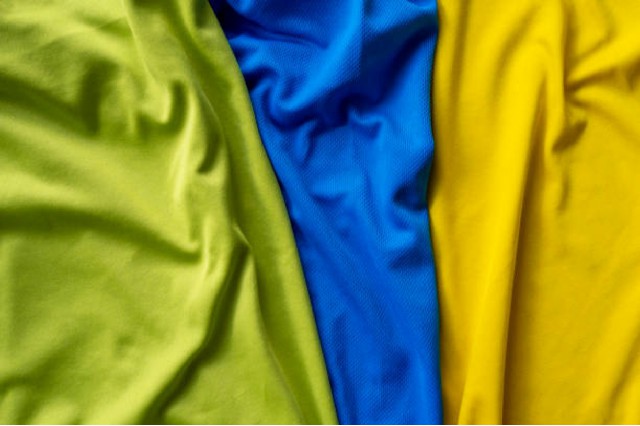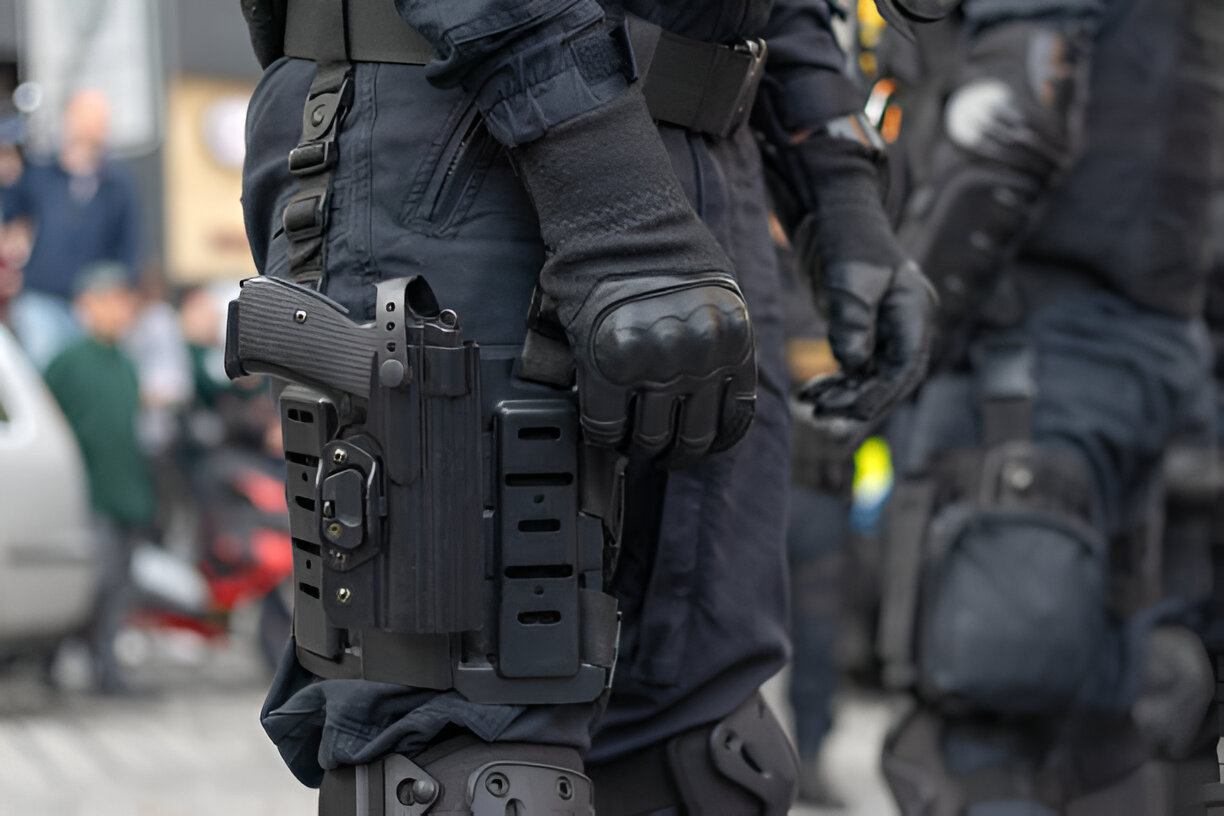What is the best material for work uniforms in hot weather?
- Published on: September 20, 2024
Finding the right fabric for your work uniform in hot weather can be tricky. When you’re working long hours in the heat, the wrong uniform can make you feel miserable. But don’t sweat it (pun intended)—this blog will guide you through the best material for work uniforms that will keep you cool, comfortable, and stylish.
What is the coolest material to wear in hot weather?
Let’s face it, no one wants to be drenched in sweat while working. The trick is choosing fabrics that allow your skin to breathe and wick away moisture.
1. Cotton
Cotton is a natural fiber that’s been a favorite for warm weather due to its breathability. Its lightweight texture allows air to circulate freely, keeping you cool. Plus, it’s soft against the skin and doesn’t cause irritation, which makes it ideal for long workdays. Although cotton absorbs moisture well, it can stay damp, which might not be great for high-sweat environments. However, for regular workdays, cotton is a reliable option for keeping cool and comfortable.
2. Linen
Linen is a top choice for hot-weather uniforms. Known for its ability to let air pass through easily, linen ensures your skin can breathe even during the hottest days. Its light texture feels cool on the skin, and it’s highly absorbent, meaning it handles sweat well. What makes linen stand out is how fast it dries, making it perfect for outdoor work. Just remember, linen wrinkles easily, giving it a more casual, lived-in look.
3. Rayon
Rayon is a synthetic fabric that’s made from wood pulp, but don’t let that fool you. It’s designed to imitate the feel of natural fibers like cotton and silk. The result is a fabric that is smooth, cool to the touch, and lightweight. Rayon doesn’t trap heat, which makes it perfect for hot weather. The downside? It can shrink in high heat, so you’ll need to wash it with care.
4. Chambray
Chambray looks a lot like denim, but it’s much lighter and more breathable. It’s a plain-weave fabric that’s made from cotton or linen, so you get the best of both worlds—style and comfort. If you’re looking for a fabric that gives you a polished, professional look without sacrificing comfort, chambray is a solid option.
5. Silk
Silk, though less common for work uniforms, is worth considering. It’s non-synthetic, fragrance-free, non-flammable, and suitable for sensitive skin. While breathable, silk is not as effective as cotton or linen in absorbing sweat. It works better as occasional office wear, if permitted, but note that silk stains easily and requires gentle washing.
What is the most breathable clothing material?
Breathability is key when you’re working in the heat. You need fabrics that let air circulate freely, keeping your body cool and dry.
Natural fibers and their properties
Natural fibers like cotton, linen, and silk are excellent for hot weather because they allow air to flow through the fabric. These materials don’t trap heat, which helps keep you comfortable. Unlike synthetic materials, they are also more skin-friendly and less likely to cause irritation.
What clothing material can withstand the most heat?
For some jobs, the concern isn’t just about staying cool—it’s also about wearing a fabric that can handle the heat.
Merino wool
Wait, wool in hot weather? Yes! Merino wool is not your typical wool. It’s lightweight and has moisture-wicking properties that make it great for both hot and cold environments. This natural fiber helps regulate your body temperature, making it ideal for working outdoors in varying conditions.
Polyester blends
Polyester might not be the most breathable fabric, but when blended with cotton or other natural fibers, it becomes more durable and heat-resistant. Polyester blends can withstand higher temperatures and are less likely to wrinkle, making them a practical choice for uniforms in tough working conditions.
Why these fabrics work well in the heat?
Each fabric has its own characteristics in high temperature. A quick overview is here:
Natural fibers and airflow
Fabrics like cotton, linen, and silk are made from natural fibers that offer excellent breathability. They allow air to circulate freely, reducing heat buildup and keeping you cooler during the day.
Moisture-wicking fabrics
Fabrics like rayon and Merino wool effectively wick away sweat from the skin. They draw moisture into the fabric, allowing it to evaporate quickly, which keeps you dry and comfortable even during strenuous activities.
Hypoallergenic options
Natural fibers like cotton and silk are excellent for those with sensitive skin. These hypoallergenic materials minimize the risk of irritation and are less likely to trap allergens. Silk, in particular, is both breathable and gentle, making it a suitable option for hot weather work uniforms. Cotton, known for being soft and gentle, is also widely recommended for people with allergies.
What is the best material for work uniforms in hot weather?
When it comes to selecting the best fabric for your work uniform in hot weather, you need to balance comfort, durability, and style.
Linen
Linen is well-suited for jobs that involve working outdoors. It is one of the best materials for staying cool, especially during summer, as it is highly breathable and does not retain moisture. Additionally, it dries quickly, which is important during periods of heavy sweating.
Cotton
Cotton offers a great balance between breathability and comfort. It’s soft, light, and lets your skin breathe, making it perfect for hot weather, though it may not be as quick-drying as other options.
Rayon
This fabric feels soft and smooth on the skin, offering breathability while managing sweat effectively. It’s ideal for active jobs where staying cool and dry is essential.
Blends
Poly-cotton blends combine the best of both worlds—cotton’s breathability and polyester’s durability. These fabrics are lightweight and sturdy, making them great for long-term use in hot conditions
Fabrics to avoid in hot weather
Not all fabrics are the same, especially for individuals working in extremely hot conditions. Some materials tend to retain heat, making you feel even hotter than you already are.
Synthetic materials (Polyester, Nylon)
Polyester and nylon are common in many uniforms, but they aren’t the best for hot weather. These synthetic fabrics tend to trap heat and can make you feel clammy and uncomfortable. If you must wear synthetic fabrics, look for ones blended with natural fibers.
Heavyweight fabrics (Wool, Leather)
While wool has some excellent properties, heavyweight versions are better suited for cold climates. The same goes for leather—these materials trap heat and don’t allow for much airflow, making you overheat.
Thick materials (Corduroy, Fleece)
Thick, textured fabrics like corduroy and fleece are better suited for cooler weather. In the summer heat, they’ll leave you feeling like you’re wrapped in a blanket.
How to maintain breathability and freshness in work uniforms
Keeping your uniforms fresh and breathable doesn’t stop at choosing the right fabric. Proper care is just as important.
Washing tips
Be sure to read the care label before washing your uniforms. For fabrics like linen and cotton, avoid using hot water, as it can cause shrinkage. Also, avoid strong chemicals and detergents that may damage the fabric’s structure and affect its breathability.
Stain removal
For fabrics like silk or rayon, treat stains gently with a mild detergent. Avoid rubbing the fabric too hard, as this can cause damage. For cotton and linen, you can use a stain remover, but always do a spot test first.
Odor control
Hot weather means more sweat, and that can lead to odors. To keep your uniforms smelling fresh, try washing them with a hypoallergenic laundry detergent and adding tumble dryer balls to reduce static and improve airflow. A clothing brush can also help remove any dirt or debris that can trap odors.
Conclusion
Choosing the best material for work uniforms in hot weather doesn’t have to be difficult.
Fabrics like linen, cotton, and rayon provide the perfect combination of breathability, moisture-wicking, and durability.
Do not wear polyester and other synthetic materials that make you sweat and stick to natural fabrics that breathe and make you comfortable.
Remember, the right uniform can make all the difference on a hot day!



